Ryan Hall's Blog, page 287
February 18, 2016
Picky Bars Offers Support to 100 Olympic Trials Qualifying Athletes
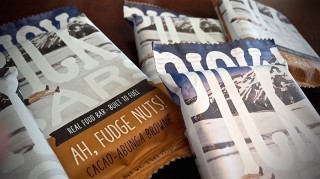
Photo: Mario Fraioli
Picky Bars, the Bend, Ore.-based energy bar company founded by professional athletes Jesse Thomas, Lauren Fleshman, and Stephanie Bruce—launched the Feed the Dream Project on Thursday. It will provide 100 Olympic Trials qualifying athletes—regardless of sport—with a free 24-bar monthly Picky Club membership from March through July, 2016.
“As professional athletes ourselves, we know that pursuing high level sports is about more than any one race, and that there is a pull to the Olympic year that makes you extra determined to leave no stone unturned,” says Fleshman, the company’s CMO and a two-time U.S. 5000m champion in her own right. “Nutrition is a huge part of preparation, and quality food is freaking expensive. The majority of my racing career, there was no energy bar made of real food that applied sports nutrition principles for performance. Picky Bars is that bar.”
Fleshman’s husband, professional triathlete and Picky Bars CEO Jesse Thomas, says that one of the company’s main goals has always been to to support, encourage, and connect with athletes. The Feed The Dream Project is one way to provide direct, tangible support in an Olympic year.
“We’re proud and stoked to extend that support, particularly during a paramount time in these athletes’ careers,” Thomas says.
The post Picky Bars Offers Support to 100 Olympic Trials Qualifying Athletes appeared first on Competitor.com.
30 March/April Races to Sign Up For
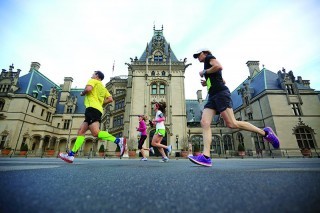
Asheville Marathon, Photo: Colby Rabon
Racing this time of the year is largely a function of where you live. For some, the cold and slippery weather limits outdoor time. But for others, it’s the best season to enjoy cool temperatures and low humidity. No matter where you live, though, it’s always a good time to add races to your calendar and keep you training through the last of winter and into spring.
Marathon/Half Marathon
Rock ‘n’ Roll Washington DC
March 12; Washington, D.C.
Get a close-up view of the nation’s capital at this Rock ‘n’ Roll event, which features both a full and half marathon (and 5K) that hit all the major sights in town. This being a Rock ‘n’ Roll race, expect a course lined with live music, local bands and cheer teams to keep you going strong.
Asheville Marathon
March 12–13; Asheville, N.C.
Choose from the half on Saturday or the full marathon on Sunday; either way you’ll enjoy running through America’s largest backyard at the Biltmore Estate, the 250-room French Renaissance chateau built by the Vanderbilt family. Both races stay within the private grounds of the property, which was designed by landscape architect Frederick Law Olmsted.
Georgia Marathon
March 20; Atlanta
In its 10th year, the Georgia Marathon was purchased by the Atlanta Track Club, which organizes more than 30 events in the city. The race starts and finishes at Centennial Olympic Park in downtown Atlanta and offers a loop course that explores much of the city.
Bend Marathon
April 24; Bend, Ore.
After a successful inaugural year, the Bend Marathon and Half returns to the Oregon mountain town. The route along the Deschutes River and the Cascade Lakes National Scenic Byway is about 90 percent pavement, 10 percent trail. The first half climbs about 500 feet, but mostly finishes with a fast downhill.
Kentucky Derby Festival Marathon
April 30; Louisville, Ky.
Before Churchill Downs is filled with fancy hats and mint juleps, Louisville welcomes runners from all over the country for a race that takes a bit longer than two minutes. The loop course features a tour of many of the city’s neighborhoods as well as a lap inside the Churchill Downs track. Be sure to bet on yourself!
Cincinnati Flying Pig Marathon
May 1; Cincinnati, Ohio
You might snicker at the name, but the Flying Pig Marathon celebrates its 18th running this year and is regarded as one of the strongest races in the Midwest. The weekend is full of races, and runners can even challenge themselves by completing the “4-way,” which includes a 5K and 10K on Saturday followed by the full marathon on Sunday.
The post 30 March/April Races to Sign Up For appeared first on Competitor.com.
Trail of the Week: Wildwood Trail, Portland, Oregon

Photo: EncMstr, CC BY-SA 3.0
Our Trail of the Week feature is made possible through a partnership with Trail Run Project, a crowd-sourced collaboration by and for the running community. Thanks to the Forest Park Conservancy for mapping and describing this route.
Forest Park is an expansive jewel just west of downtown Portland, Oregon, featuring miles of trails underneath towering trees and surrounding lush greenery.
The Wildwood Trail, designated by the Secretary of the Interior as a National Recreation Trail, meanders for about 30 breathtaking miles, from the southern end of the trail at the Vietnam Veterans Memorial in Washington Park to the Northwest terminus of the trail at Newberry Road. There are blue diamond markers every quarter mile for the length of the trail.
For much of its duration, the Wildwood Trail overlooks the Willamette River as it stretches onward, through the northeast slope of the Tualatin Mountains between Skyline Boulevard and St. Helens Road. This trail provides for a quiet and serene run through varied and evolving forest ecosystem. The Wildwood enters Forest Park proper when it crosses West Burnside Street at about Mile 3.
This is an excellent quality hard-packed trail. If you are planning a through run, starting at the south end is preferable. That way, you get the hardest climbing out of the way at the beginning and you avoid the potential crowds in the arboretum and around Pittock Mansion on nicer days.
The Data
Miles: 29.7
Runnable: 96 percent
Average Grade: 3 percent
Max Grade: 25 percent
Total Ascent: 2,425 feet
Total Descent: -2,512 feet
Highest Elevation: 937 feet
For a closer look, check out the interactive map, data, photos and virtual run simulator courtesy of Trail Run Project:
The post Trail of the Week: Wildwood Trail, Portland, Oregon appeared first on Competitor.com.
Out There: Time Out!

Ever wish you could call a time-out on life?
When I was younger, the neighborhood kids used to get together for hours-long games of Tag. We’d run around the neighborhood, chasing each other up fire escapes and through alleyways in frenzied fashion to avoid being “it.” Though most anyone was fair game for chase, it was generally accepted that a person who made a “T” shape with the hands was off-limits.
“TIME-OUT!” someone would cry after skinning a kneecap or feeling the symptoms of an oncoming asthma attack. By making a simple hand signal, they could escape the chase for a minute and recoup. Everyone respected the time-out and left the kid alone. There was no preying on the weak.
I demand to know why we don’t allow this in adulthood.
Lately, I’ve come to the realization that I’ve taken on too much. I’m a FOMO-er to a fault, the type of person who enthusiastically says “yes” to every personal and professional opportunity that comes my way. Life is a delicious buffet, my friends, and I want to sample it all.
But this month, enthusiasm has turned to anxiety. There simply haven’t been enough hours in the day for family, work, and training. Instead of looking forward to savoring the full and varied plate I’ve built, I dread it.
During the busiest of times, something has to give, and that something is usually my run. It’s the conundrum every runner faces at some point: feeling guilty disappearing for an hour to frolic on the trails when there are deadlines to make, work to do, and people to answer to. I need to conquer my mountain of tasks! I need to get stuff done! I need to have all the answers! I need to make everyone happy! I need…I need…
I need a damn time-out, that’s what I need.
The trouble with “too much” is that it’s easy to lose perspective. We get so focused on getting stuff done that we forget to pay attention to the stuff that helps us get stuff done.
Despite my recent insistence that I don’t have time to run, I’ve discovered skipping an hour-long track session doesn’t actually create more minutes in the day. Instead, I just have 60 extra minutes to become even more stressed out about my to-do list. Some are motivated by stress, but I am not one of those people. I just turn into a blur of emotional eating and nonsensical babble.
But when I take that hour in my running shoes, I don’t feel so overwhelmed. My head clears, my attitude improves, and things start to make a little more sense. It’s a time-out that lets me escape the chase and recoup. Running is the stuff that helps me get stuff done.
When overwhelmed with demands, there are options: You can make a mediocre effort at everything in an attempt to get things done. You can try to do everything perfectly and become a basket case. Or you can put your hands in the air, make a T shape, and call a time-out until you’re ready to get back in the game.
As it turns out, that’s still an option, even in adulthood.
* * *
About The Author:
Susan Lacke does 5Ks, Ironman Triathlons and everything in between to justify her love for cupcakes (yes, she eats that many). Susan lives and trains in Salt Lake City, Utah with three animals: A labrador, a cattle dog, and a freakishly tall triathlete husband. She claims to be of sound mind, though this has yet to be substantiated by a medical expert. Follow her on Twitter: @SusanLacke.
The post Out There: Time Out! appeared first on Competitor.com.
February 17, 2016
4 Secrets of the Tarahumara That Will Improve Your Running
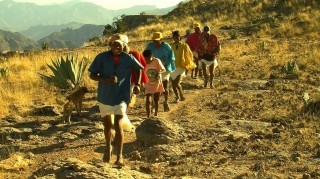
Photo Courtesy of Dana and Sarah Films
The Tarahumara of northern Mexico, of all the world cultures with a history of running, probably best deserve the top accolades for their achievements in the ultrarunning realm. After all, these proud Native Americans refer to themselves at the “Rarámuri,” which means “those who run fast” and have a long tradition of covering hundreds of miles on foot over the course of several days in order to communicate, trade and hunt.
Christopher McDougall’s bestselling book, Born To Run, featured these incredible runners, and due to their minimalist footwear, spawned a barefoot running movement. But, footwear and biomechanics aside, what sets these runners apart from the rest of the world? How are they able to run so far for so long? Here are four secrets of the Tarahumara you can use to apply to your own running:
1. Do not waste energy.
American ultrarunning legend Scott Jurek, who won seven straight Western States Endurance Run and set numerous American ultra records, spent time with the Tarahumara in Mexico’s Copper Canyon in 2006. He observed that nothing is wasted with these runners. “What really stood out to me when I ran with them is the efficiency with how they live their lives as well as the efficiency while running,” he says. “They are really about not wasting energy or calories. When I was in the Copper Canyon hiking with Micah True and the Tarahumara for 16 hours, I didn’t particularly notice that they had the perfect stride—not that they didn’t—but I noticed how they didn’t waste any energy. We would take a water break or a rest and they would all sit down right away. They didn’t stand. It was all about conservation to them.” Jurek also points out that this focus on efficiency translated into all things for the Tarahumara, from water conservation to their running stride to pacing. “A lot of people think there is some magical secret around the Tarahumara, but it really comes down to simple things like how you use your energy and when you are consuming energy, being in that present moment,” he says. Jurek also notes that the Tarahumara don’t subscribe to the philosophy of “putting time in the bank” for long runs. “As a culture they have to be able to have the energy to run over a canyon after transmitting messages or trading with another tribe,” he says. “Their pace can’t be haphazard, because they don’t have a lot of extra calories to waste.”
2. Work as a team.
McDougall points out that the Tarahumara benefit from running together as a tribe. “Anyone who’s ever joined a running club has already learned one of the most important lessons of the Tarahumara: collaboration makes you stronger and happier,” he says.
The Tarahumara always race as a team, not as individuals. They feed off each other’s energy and camaraderie, but there’s also another benefit: by pacing yourself to the group, you reduce the risk of going out too hard and blowing up. “These days, I run with friends as often as possible and it’s made a tremendous improvement in my mileage and enjoyment,” McDougall said.
RELATED: Remembering Caballo Blanco on the Big Screen
3. Run with a contagious joy.
Dana Richardson and Sarah Zentz recently completed a documentary, Goshen, about the Tarahumara and picked up on their love of the sport. “What we noticed when filming the Tarahumara men running the traditional ball race [Rarajipari] and the women running their hoop and arrow race [Ariweta], that for the Tarahumara running is a joyful and sacred experience with a powerful spiritual significance,” says Richardson.
“Their traditional running is about working together in teams, celebrating as a community and honoring one another. Their laughter while running their traditional races was not only contagious, but inspiring. When we came back to the States and examined the faces of people running, we noticed pain, suffering, and unhappiness. I believe we get it wrong firstly by running without having correct form. Therefore, we do experience pain from injuries and loose the joy that can be found in running.”
4. Embrace simplicity.
The Tarahumara don’t rely on GPS watches, heart-rate monitors, pace calculators, detailed training plans or a special shoe that best matches their running stride. Keeping things simple allows them to focus exclusively on running. McDougall contends that most runners today are too focused on the wrong things: the ‘getting’ instead of learning—i.e., getting new shoes, getting into Boston, getting a PR, getting ahead of that other guy on Strava—all that acquire and conquer nonsense. “The Tarahumara treat running as a fine art, something to be learned slowly and perfected over a lifetime,” he says. “The goal isn’t necessarily to become fast; it’s to become good. Artists don’t obsess over speed; they obsess over mastering skills. For runners, that skill is form. The more you learn about moving your body lightly and efficiently, the closer you’ll be to running like the Tarahumara.”
RELATED: The Legacy of “Born To Run”
The post 4 Secrets of the Tarahumara That Will Improve Your Running appeared first on Competitor.com.
Shoe Of The Week: On Running Cloudflyer
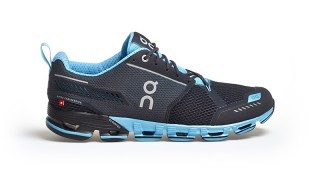
To get the level of cushioning that comes in most “recovery shoe” type of marshmallow trainers, you normally have to run in high-profile, “maximalist” platform-like footwear. On Running’s Cloudflyer, with its podular foam loops, called “Clouds,” provides a pillow-esque ride and does so with an impressive amount of stability. This upstart Swiss brand has been evolving its innovative and meticulously designed cloud cushioning system for several years to great acclaim. The 12 bubble-like Clouds are strategically placed and use different wall thicknesses to accommodate different gaits and a directed foot strike, even with varying strides, depending on how fresh you feel or whether you are ascending or descending. On the Cloudflyer, the underfoot nodules are tuned for lightweight stability and performance. It gives this shoe a semi-firm feeling and a penchant for quicker leg turnover and faster running. The upper is made from an intricate combination of materials engineered to provide comfort, support and fluid flexibility from touch-down to toe-off. The upper uses a unique lacing system and heel strap cage for a custom-like, secure fit and the arch accommodates those with average feet.
The wider platform also serves to provide an impressive level of stability. The rear medial pods are more substantial for a moderate amount of motion control but not so much that they interfere with the natural heel to toe motion, as aided by the Cloudflyer’s curved, rocker-shaped midsole. Best of all, the shock absorption of the Cloudflyer is outstanding so you won’t hesitate to use the shoe on long outings or on days when your legs feel trashed but you still want to eke out another training run.
This is the shoe for you if … You’re looking for a fairly lightweight everyday stability trainer and you appreciate technical engineering of smaller details of a shoe.
Price: $160
Weights: 9.8 oz. (men’s size 9.0); 8.4 oz. (women’s size 7.0)
Heel-Toe Offset: 7mm; 27mm (heel), 20mm (forefoot)
Info: On-running.com
RELATED: Shoe of the Week—Hoka One One Vanquish 2
The post Shoe Of The Week: On Running Cloudflyer appeared first on Competitor.com.
Workout Of The Week: Recovery Run
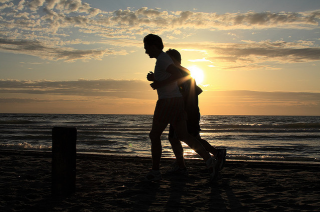
Recovery runs will do just as much to enhance your race performances as any other type of workout. Photo: Flickr.
If you asked a stadium-size crowd of other runners to name the most important type of running workout, some would say tempo runs, others would say long runs, and still others would say intervals of one kind or another. None would mention recovery runs. Unless I happened to be in that stadium.
I won’t go quite so far as to say that recovery runs are more important than tempo runs, long runs, and intervals, but I do believe they are no less important. Why? Because recovery runs, if properly integrated into your training regimen, will do just as much to enhance your race performances as any other type of workout. Seriously.
RELATED: Improve Tomorrow’s Workout Today
It is widely assumed that the purpose of recovery runs—which we may define as relatively short, slow runs undertaken within a day after a harder run—is to facilitate recovery from preceding hard training. You hear coaches talk about how recovery runs increase blood flow to the legs, clearing away lactic acid, and so forth. The truth is that lactic acid levels return to normal within an hour after even the most brutal workouts. Nor does lactic acid cause muscle fatigue in the first place. Nor is there any evidence that the sort of light activity that a recovery run entails promotes muscle tissue repair, glycogen replenishment, or any other physiological response that actually is relevant to muscle recovery.
In short, recovery runs do not enhance recovery. The real benefit of recovery runs is that they allow you to find the optimal balance between the two factors that have the greatest effect on your fitness and performance: training stress and running volume.
Here’s how:
Training stress is what your body experiences in workouts that test the present limits of your running fitness. You can be fairly sure a workout has delivered a training stress when it leaves you severely fatigued or completely exhausted. The two basic categories of workouts that deliver a training stress are high-intensity runs (intervals, tempo runs, hill repeats) and long runs. A training program whose objective is to prepare you for a peak race performance must feature plenty of “key workouts” that challenge your body’s capacity to resist the various causes of high-intensity fatigue (muscular acidosis, etc.) and long-duration fatigue (muscle tissue damage, etc). By exposing your body to fatigue and exhaustion, key workouts stimulate adaptations that enable you to resist fatigue better the next time.
Running volume, on the other hand, has a positive effect on running fitness and performance even in the absence of exhaustive key workouts. In other words, the more running you do (within the limit of what your body can handle before breaking down), the fitter you become, even if you never do any workouts that are especially taxing. The reason is that increases in running economy are very closely correlated with increases in running mileage. Research by Tim Noakes, M.D., and others suggests that while improvement in other performance-related factors such as VO2max ceases before a runner achieves his or her volume limit, running economy continues to improve as running mileage increases, all the way to the limit. For example, if the highest running volume your body can handle is 50 miles per week, you are all but certain to achieve greater running economy at 50 miles per week than at 40 miles per week, even though your VO2max may stop increasing at 40 miles.
You see, running is a bit like juggling. It is a motor skill that requires communication between your brain and your muscles. A great juggler has developed highly refined communication between his brain and muscles during the act of jugging, which enables him to juggle three plates with one hand while blindfolded. A well-trained runner has developed super-efficient communication between her brain and muscles during the act of running, allowing her to run at a high sustained speed with a remarkably low rate of energy expenditure. Sure, the improvements that a runner makes in neuromuscular coordination are less visible than those made by a juggler, but they are no less real.
For both the juggler and the runner, it is time spent simply practicing the relevant action that improves communication between the brain and the muscles. It’s not a matter of testing physiological limits, but of developing a skill through repetition. Thus, the juggler who juggles an hour a day will improve faster than the juggler who juggles five minutes a day, even if the former practices in a dozen separate five-minute sessions and therefore never gets tired. And the same is true for the runner.
Now, training stress—especially key workouts inflicting high-intensity fatigue—and running volume sort of work at cross-purposes. If you go for a bona fide training stress in every workout, you won’t be able to do a huge total amount of running before breaking down. By the same token, if you want to achieve the maximum volume of running, you have to keep the pace slow and avoid single long runs in favor of multiple short runs. But then you won’t get those big fitness boosts that only exhaustive runs can deliver. In other words, you can’t maximize training stress and running volume simultaneously. For the best results, you need to find the optimal balance between these two factors, and that’s where recovery runs come in.
By sprinkling your training regimen with relatively short, easy runs, you can achieve a higher total running volume than you could if you always ran hard. Yet because recovery runs are gentle enough not to create a need for additional recovery, they allow you to perform at a high level in your key workouts and therefore get the most out of them.
I believe that recovery runs also yield improvements in running economy by challenging the neuromuscular system to perform in a pre-fatigued state. Key workouts themselves deliver a training stress that stimulates positive fitness adaptations by forcing a runner to perform beyond the point of initial fatigue. As the motor units that are used preferentially when you run begin to fatigue, other motor units that are less often called upon must be recruited to take up the slack so the athlete can keep running. In general, “slow-twitch” muscle fibers are recruited first and then “fast-twitch” fibers become increasingly active as the slow-twitch fibers wear out. By encountering this challenge, your neuromuscular system is able to find new efficiencies that enable you to run more economically.
Recovery runs, I believe, achieve a similar effect in a slightly different way. In a key workout you experience fatigued running by starting fresh and running hard or far. In a recovery run you start fatigued from your last key workout and therefore experience a healthy dose of fatigued running without having to run hard or far. For this reason, although recovery runs are often referred to as “easy runs,” if they’re planned and executed properly they usually don’t feel very easy. Speaking from personal experience, while my recovery runs are the shortest and slowest runs I do, I still feel rather miserable in many of them because I am already fatigued when I start them. This miserable feeling is, I think, indicative of the fact that the run is accomplishing some real, productive work that will enhance my fitness perhaps almost as much as the key workout that preceded it. Viewed in this way, recovery runs become essentially a way of squeezing more out of your key workouts.
The post Workout Of The Week: Recovery Run appeared first on Competitor.com.
California Dreamin’: 10 Reasons the Los Angeles Marathon Should Be on Your ‘Must Run’ List
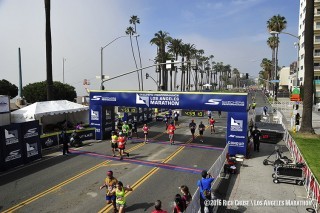
The finish line in Santa Monica, just steps from the Pacific Ocean. Photo: Rich Cruse
When it comes to great U.S. cities, Los Angeles ranks among the very top in terms of size, image and desirability as a vacation destination. When it comes to great U.S. marathons, however, the Los Angeles Marathon hasn’t really made the list in quite a while. With a new director, new title sponsor and ambitious plans, the race is poised to take its rightful place as one of the world’s great big-city marathons.
That’s been one of the prime objectives of Tracey Russell, who took over as CEO of the marathon in 2013 after six years leading the Atlanta Track Club. This year’s race, held on Feb. 14, had about 21,000 finishers, a total similar to last year when the race was run in mid-March.
“Los Angeles as a city has set tourism records for three years in a row, and for us, to capitalize on building a really strong southern California race into being seen nationally and globally as a must-run marathon is a priority,” Russell says.
One way to do that is simply giving people good reasons to come experience the city for themselves.
“We’re getting more people here, capitalizing on the vibrancy of Los Angeles,” Russell says.
PHOTOS: 2016 Los Angeles Marathon
To that end, the race hosted the U.S. marathon championships in 2015, and this year, it staged the U.S. Olympic Trials downtown on Feb. 13, the day before the city-wide Los Angeles marathon that sent runners from Dodger Stadium to Santa Monica with a finish line a stone’s throw from the Pacific Ocean.
The marathon also figures to gain some attention and momentum from the city’s bid to host the 2024 Summer Olympics.
The race landed a new title sponsor last year in Skechers Performance, which is based in Los Angeles and growing its own reputation as a brand for serious runners. Russell is looking forward to how Skechers, the No. 2 brand in all athletic footwear sales in the U.S., can leverage its national and global presence to help build awareness of the marathon. Skechers is using its 1,200 retail outlets around the world to spread its performance running vibe through window displays, product marketing and in-store visuals of the marathon and sponsored athletes Meb Keflezighi and Kara Goucher.
“Los Angeles has a great story, and we want to be able to tell that,” says Rick Higgins, senior vice president of merchandising and marketing at Skechers Performance. “It really makes sense to partner with them as they are refreshing their base, and we also have this great message, now connecting with consumers like we never have in the past.”
That message got a boost during the race weekend this year, with Skechers-wearing athletes taking second (Keflezighi) and fourth (Goucher) in the Olympic Trials races on Saturday—15 of the top finishers wore Skechers in the men’s and women’s Trials races—and winning the Los Angeles Marathon on Sunday (Weldon Kirui).
RELATED: Kirui, Lehonkova Win 2016 Los Angeles Marathon Titles
Currently, only five percent of the L.A. field is international, one of the areas of potential growth that excites Russell. “Los Angeles is one of the only remaining huge marathons that has so much ‘blue sky’ potential to further develop and build,” Russell says.
Before it grows so much that you can’t get in, here are 10 reasons you should consider running in Hollywood next winter.
1. Now Dependable
The youngest of the big-city marathons, LA debuted in 1986 (9 years after Chicago, 16 years after New York, and 90 years after Boston). And the race has had growing pains: the ownership changed several times, the course has seen at least five different routes, one year the date was even changed to May. But runners can now count on the experience of Russell, who successfully directed the Peachtree Road Race in Atlanta, the world’s largest 10K with 60,000 participants. Plus, you can plan it being held mid-winter and the current course has been in place since 2010 with no plans for changing it.
2. Start in Dodger Stadium
About that course. The first thing you experience is a unique start venue: Dodger Stadium. Dave McGillivray, race director extraordinaire of the Boston marathon and countless other events around the country, ran this year’s Los Angeles Marathon and said after the race, “I’m always thinking that there’s got to be a better way than having runners have to camp on the ground at the start of a race. Could we bring in benches or something? And then I get to this start, and here’s this whole stadium with seating for everyone and it is wide open, you can walk right in. It is brilliant.”
3. Finish at the Beach
Twenty-six miles later, you finish one block from the beach with the famed Santa Monica Pier to your right. Arlene Fichman, a “legacy runner” who has completed all 31 editions of the marathon as well as run New York and Boston, considers this one of the best parts of the current course. “After an overview of the city, you get this beautiful stretch along the Pacific for the last mile,” she says.
4. In Between: This is Tinsel Town
Hollywood Blvd., Rodeo Drive, Santa Monica Blvd.—every street you’re running on is in a movie or a song. Few cities have so many cultural references—they come as a surprise and pile up on each other as you run through the famed locales. The miles go by quickly when the song in your head drifts from “Pretty Woman” to “Sunset Boulevard” to “All I wanna do is have some fun, until the sun comes up over Santa Monica Boulevard.”
5. Traffic-Free and Street Level
No one would ever call L.A. a pedestrian-friendly city: Too spread out, too many cars and highways. You spend much of the time during most visits sitting in six lanes of traffic looking out the window of a taxi or rental car. This initially makes the idea of a marathon here feel incongruous, but once on the course it becomes clear that you’ve been given a unique opportunity to experience the city from street level, free of traffic. You notice the variety of homes and local restaurants, feel the vibe of each neighborhood and how they fit together. You won’t get another chance like this 364 days of the year. “It’s a great way to see the city, at six to seven miles an hour,” says marathon legacy runner George Good. “You see the city with different eyes than behind a wheel.”
6. It’s All Downhill
That’s not exactly true: there are a few ups at mile four and five and a slight grade at mile 20, but the overall course goes downhill, finishing some 400 feet lower than the start. Big drops come in the first two miles, during mile 14 and, gratefully, from mile 23 to the finish. Oh, and it finishes at sea level.
7. Mid-Winter Sunshine
On Feb. 14, 2016, the high temperature in New York City was 15 degrees Fahrenheit, in Chicago, 19. In Los Angeles, it reached 79, with a low of 48. ’Nuff said. Granted, that can be more warmth than you want for a marathon, but the race counters it by starting soon after dawn at 6:55 a.m., and the temps tend to drop as you approach the ocean later in the race. It never got nearly as steamy during the race on Sunday as it did during the televised Olympic Trials mid-day on Saturday.
8. Race-Week Registration
Unlike other big-city marathons, where you have to register months in advance and still often are awaiting lottery results, you can get into L.A. almost up to the start. This year, you could register online until Wednesday, Feb. 10, and at the expo until Saturday—the day before the race. (Granted, that luxury could go away as the race grows.)
9. The Students
For nearly all of the marathon’s history, teachers in L.A. have helped train at-risk young runners from the city to run in the marathon. Now, as part of the city-wide program, Students Run LA, they arrive 3,000-strong on race day in matching uniforms and infuse the race with youthful energy and passion. The organization reports that more than 95 percent of them finish the marathon (and, an amazing side effect, more than 95 percent of the seniors who run the marathon finish high school and plan to attend college.) At the race, they are everywhere you look—joking among themselves, clearly ready for this challenge and unabashedly proud of their accomplishment. It not only makes you feel young to be running among them but proud to be part of a sport that can inspire so much confidence and excellence.
10. The Block Party
“Boston has history, New York the 59th Street Bridge and the roar of 1st Avenue,” Good says. “What I enjoy most in L.A. are the people along the way, particularly the kids.” Fishman agrees. “You can think of Boston like the World Series of running,” she says. “L.A. is a lot more of a people’s race. It’s like a big block party. You get a really good feeling of the whole city coming together.” McGillivray raved about the spontaneous support from the neighborhoods along the way. “You had everything offered—water, fruit, candy—as good as I’ve ever seen,” he said.
Few cities in the world could create a nearly linear 26.2 mile course and have every mile be decidedly urban, passing through the heart of diverse neighborhood after neighborhood. Each one embraces being part of the event and provides unique support, from Japanese drummers to Latin dance teams to Beverly Hills cheerleaders. You come away with an understanding that people actually live here and work to make it home, a home that welcomed you into it on this day.
The post California Dreamin’: 10 Reasons the Los Angeles Marathon Should Be on Your ‘Must Run’ List appeared first on Competitor.com.
February 16, 2016
The U.S. Olympic Trials Marathon: How Did Half Marathon Qualifiers Do?
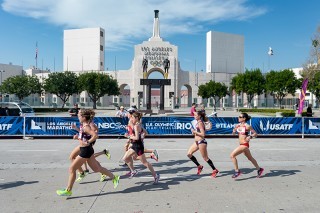
Photo: Matt Trappe
With the results of a hot 2016 U.S. Olympic Trials Marathon freshly in the books, it’s worth revisiting an issue that has become increasingly charged: Should athletes be able to gain entry into the Trials on the basis of half-marathon times alone? And what are the chief arguments for and against this practice, now in its second Olympic cycle?
History
The 2008 Trials offered an unprecedented lure for elite runners who were marathon virgins: In addition to the marathon standards—then 2:22:00 for men and 2:47:00 for women—USA Track & Field established 5,000-meter and 10,000-meter track qualifying times for men (13:40.00 and 28:45.00, respectively) and a 10,000-meter option for women (33:00.00). Oddly, there was no half-marathon standard in the mix despite that event ostensibly being far more predictive of marathon success than a 5K or 10K. Perhaps not surprisingly, this feature was noncontributory at the Trials races.
USATF made significant changes before the 2012 Trials in Houston. In addition to scrapping the 5,000-meter option for men, it tightened the marathon times to 2:19:00 for men and 2:46:00 for women, lowered the men’s 10,000-meter standard to 28:30.00, and added half-marathon options of 1:05:00 for men and 1:15:00 for women. After the races, Camille Herron, who set her own personal best of 2:37:14 in Houston and since 2013 has served as the women’s secretary and an athlete representative with USATF’s Long-Distance Running Executive Committee, analyzed the results on her blog at CamilleHerron.com. Herron’s conclusions were unequivocal: marathon experience portended marathon success, and any correlation between half-marathon success and a fruitful marathon debut at the Olympic Trials were tenuous at best. She notes also that the relatively easier marathon standard for women encourages distaff athletes to move up to the full earlier as compared to men.
The L.A. Story
For 2016, USATF did away with the 10,000-meter option but kept the half-marathon standards of 1:05:00 and 1:15:00. The men’s marathon standard was initially 2:18:00 and the women’s 2:43:00, but those standards were loosened to 2:19:00 and 2:45:00, respectively, in December of 2015 when the qualifying standards for the Rio de Janeiro Olympics were relaxed. Although there are about as many half-to-full conversion factors as there are people with calculators, for a well-trained and experienced marathon runner, a 1:05:00 translates to about a 2:16:30 and a 1:15:00 to roughly a 2:37:30.
At the 2016 Trials, 125 men qualified solely by meeting the half-marathon standard, 86 men qualified in the marathon (with a good many of them, of course, also making the 13.1-mile standard, and performing better there; for example, Tim Ritchie’s 1:01:23 from October is clearly superior to the 2:14:50 he ran in 2013), so in all, 211 men were eligible to compete on Saturday.
On the women’s side, it was a much different story. Of 246 total qualifiers, only 48 (19.5 percent) qualified solely by virtue of a half-marathon, leaving 198 who met the marathon standard. This is not surprising, given how much stronger a 1:15:00 half is than a 2:45:00 marathon, at least on paper.
PHOTOS: Amazing Images From 2016 Olympic Trials Marathon
About 80 percent of those eligible in each case (167 men and 199 women) started the 2016 Trials races. Owing to extremely unfavorable weather and course conditions—despite the race being held in a city of about four million people, one stretch of road was inexplicably an inch or two deep in sand—the attrition rates were unprecedented, with 62 men (37 percent of the field) and 50 women (25 percent) failing to finish.
Whither 13.1?
Intuition suggests that the DNF rate in a Trials marathon even under optimal conditions will be higher among those who gain entry via a half. Not only is the collective 26.2-mile fitness of this group bound to be lower, but the incentive for soldiering on when the day has gone to hell is, on average, presumably less than it is for established marathon racers. On a steamy morning, one expects this effect to be amplified.
Whatever the reasons, all in all, the half-marathon qualifiers in both races fared poorly. Galen Rupp was obviously a thunderclap of an exception, logging one of the most remarkable marathon debuts in U.S. history, running with poise and confidence throughout and looking less than fully taxed at the end in winning the race. After Rupp came Patrick Smyth in eighth, Augustus Maiyo in 15th and Ben Payne in 16th but both Smyth and Payne had previously competed in marathons, albeit outside the current qualifying window. Given that only four of the top 23 finishers were competing by virtue of a half-marathon time despite close to half of the total field consisting of such types, a reasonable argument could be made for enforcing marathon experience on the entire field in the future.
On the women’s side, if Janet Cherobon-Bawcom—who got in thanks to her 1:10:46 half last fall but ran 2:29:45 for 5th at the 2012 Trials before encountering injury problems—is excluded from consideration, the first athlete to finish from the 13.1-mile pool was former Davidson University standout Erin Osment in 18th, and the next debutant was University of New Hampshire grad Keely Maguire in 24th. Both are young up-and-comers who ran extremely well, but clearly, neither was a factor in the race unfolding 2 miles ahead of them up front.
In the end, the only marathon newcomer who ultimately had even a whiff of influence on the Olympic team selection was the once-in-a-generation Rupp. Is this a strong argument for doing away with the 13.1-mile option? Not necessarily. But it’s unquestionably clear that even highly accomplished half-marathoners without experience over the full distance stand very little chance of placing in the top 10 or 15 on this stage, much less making the Olympic squad.
The post The U.S. Olympic Trials Marathon: How Did Half Marathon Qualifiers Do? appeared first on Competitor.com.
Brooks, Nike Lead U.S. Olympic Trials Marathon Shoe Count
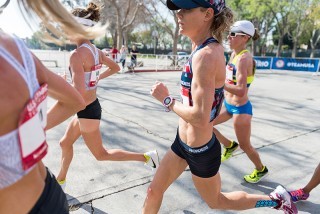
Among the top 150 combined finisher's at the U.S. Olympic Trials, runners wore shoes from 13 different brands. Photo: Matt Trappe
We combed through race results, thousands of race photos and dozens of social media posts following the 2016 U.S. Olympic Trials Marathon in Los Angeles to determine an accurate shoe count of the top 75 finishers in both the men’s and women’s races. We stopped at 75 because it was increasingly difficult to locate photos and information about runners in the latter parts of each field.
Although it’s not necessarily statistically significant given the attrition in the race, Brooks had the most shoes among top-75 finishers in the men’s and women’s races at the U.S. Olympic Trials Marathon on Feb. 13 in Los Angeles. Among the top 150 combined runners, Brooks claimed the feet of 27 runners—led by Desi Linden’s runner-up finish in the women’s race, followed by her Hansons-Brooks teammates Melissa White (15th, 2:39:57) and Jacob Riley (15th, 2:18:31). Brooks had 15 runners among the top 75 men and 12 runners among the top 75 women.
Nike was second with 26 pairs, including both race winners (Amy Cragg, 2:28:20, and Galen Rupp, 2:11:12) and three of the top six finishers in the women’s race (Cragg, Shalane Flanagan, 3rd, 2:29:19, and Janet Bawcom, 6th, 2:31:14) and three of the top eight finishers in the men’s race (Rupp, Luke Puskedra, 4th, 2:14:12 and Patrick Smyth, 8th, 2:15:26). Nike was the top brand among the first 75 women finishers, with 14 runners wearing the Swoosh.
Nike claimed three of the six U.S. Olympic qualifiers (Rupp, Cragg, Flanagan), while Skechers (Meb Keflezighi, 2nd, 2:12:20), Brooks (Linden, 2nd, 2:28:54) and Saucony (Jared Ward, 3rd, 2:13:00) each claimed one. Rupp, Cragg and Flanagan all wore a yet-to-be-unveiled Nike prototype racing flat, Keflezighi wore Skechers GoMeb Speed 3-2016, Linden wore the Brooks T7 Racer and Ward raced in a pair of Saucony Type A.
Despite not having any finisher’s among the top 10 in either race, Adidas was third among shoe brands with 23 runners out of the top 150 combined total finishers, led by Tim Young (11th, 2:17:09), Jeffrey Eggleston (13th, 2:17:19), Augustus Maiyo (16th, 2:18:33) and Wendy Thomas (17th, 2:40:39).
In all, the top 150 combined finishers wore shoes from 13 different brands.
It’s hard to put any real meaning to such a tally, given that so many top runners dropped out of the race and because some runners at the back half of the top 50 in each race aren’t sponsored and may even pay for their own shoes. (In all, there were 149 women finishers and 105 men.) That said, it’s still interesting, considering the elite and sub-elite runners who did finish among the top 75 in their respective gender are still in the top percentile of American marathoners. In other words, these are the brands that runners choose to run fast marathons.
Top 150 Combined Finisher Shoe Count
1. Brooks – 27
2. Nike – 26
3. Adidas – 23
4. ASICS – 16
5. Skechers – 15
6. New Balance – 14
7. Saucony – 13
8. Mizuno – 6
9. Hoka One One – 4
10. Reebok – 2
11. Newton – 2
12. Salomon – 1
13. Under Armour – 1
RELATED: New Shoes and Kits Unveiled for the 2016 U.S. Olympic Trials Marathon
Here are the breakdowns for the men’s race and women’s races:
Men’s Top 75 Shoe Count
1. Brooks – 15
2. Nike – 12
3. Adidas 11
4. ASICS – 11
5. Skechers – 7
6. Saucony – 7
7. New Balance – 4
8. Hoka One One – 2
9. Reebok – 2
10. Mizuno – 1
11. Under Armour – 1
12. Salomon – 1
13. Newton – 1
Women’s Top 75 Shoe Count
1. Nike – 14
2. Brooks – 12
3. Adidas – 12
4. New Balance – 10
5. Skechers – 8
6. Saucony – 6
7. ASICS – 5
8. Mizuno – 5
9. Hoka One One – 2
10. Newton – 1
Top 10 Men’s Finishers
1. Galen Rupp – Nike prototype racing flat
2. Meb Keflezighi – Skechers GoMeb Speed 3 – 2016
3. Jared Ward – Saucony Type A6
4. Luke Puskedra – Nike Zoom Streak LT 2
5. Tyler Pennel – Reebok One Racer
6. Matt Llano – Hoka One One Tracer
7. Shadrack Biwott – ASICS GEL-Hyper Speed 7
8. Patrick Smyth – Nike Zoom Streak 6
9. Sean Quigley – Saucony Fastwitch 7
10. Nick Arciniaga – Under Armour SpeedForm Slingshot
Top 10 Women’s Finishers
1. Amy Cragg – Nike prototype racing flat
2. Desi Linden – Brooks T7 Racer
3. Shalane Flanagan – Nike prototype racing flat
4. Kara Goucher -Skechers GoMeb Speed 3 – 2016
5. Janet Bawcom – Nike Zoom Streak 5
6. Kellyn Taylor – Hoka One One Tracer
7. Maegan Krifchin – Mizuno Hitogami 2
8. Serena Burla – Mizuno Wave Ronin 3
9. Katja Goldring – Skechers GoMeb Speed 3 – 2016
10. Alia Gray – ASICS GEL-Hyper Speed 7
The post Brooks, Nike Lead U.S. Olympic Trials Marathon Shoe Count appeared first on Competitor.com.
Ryan Hall's Blog
- Ryan Hall's profile
- 21 followers



